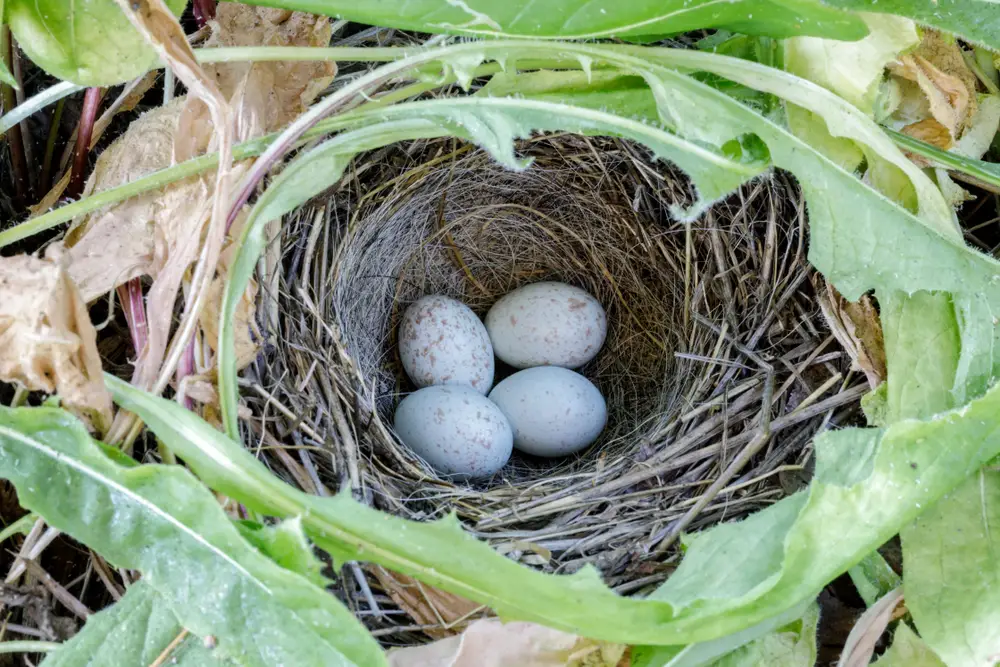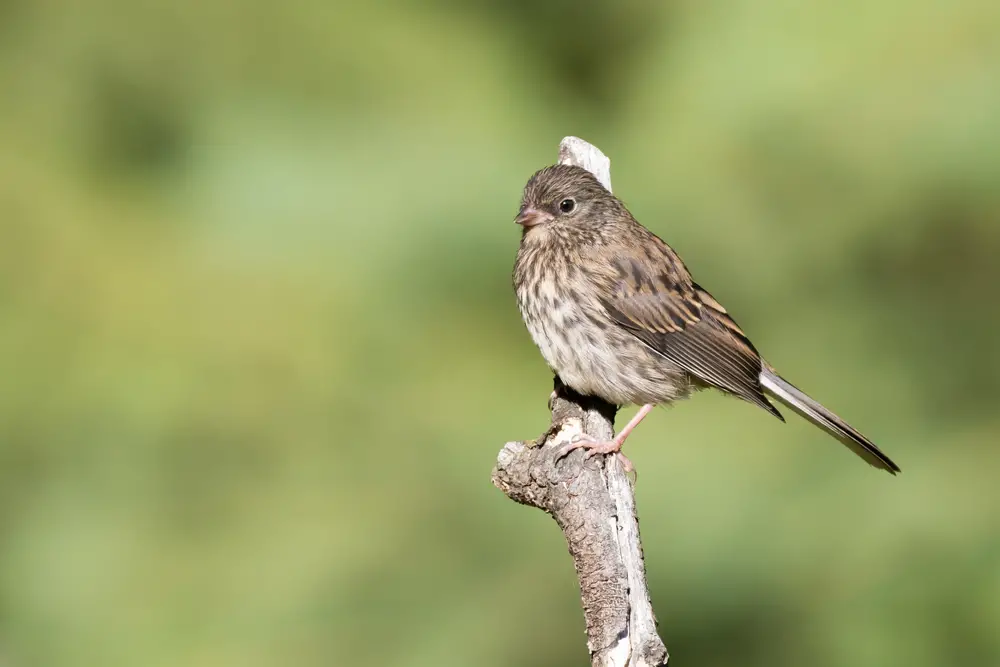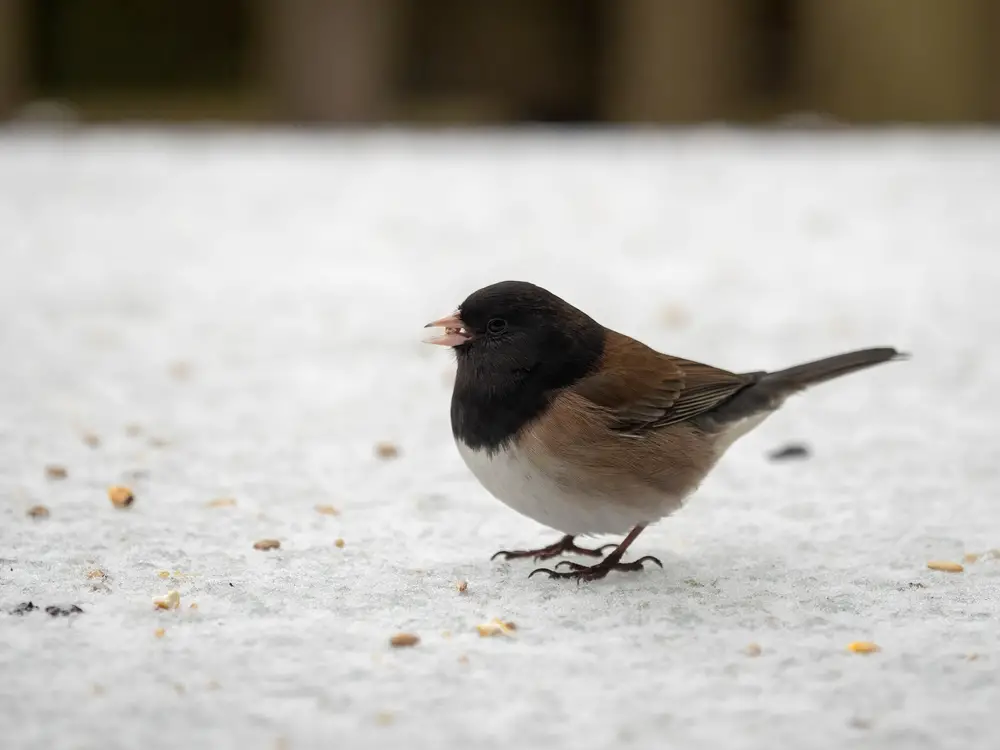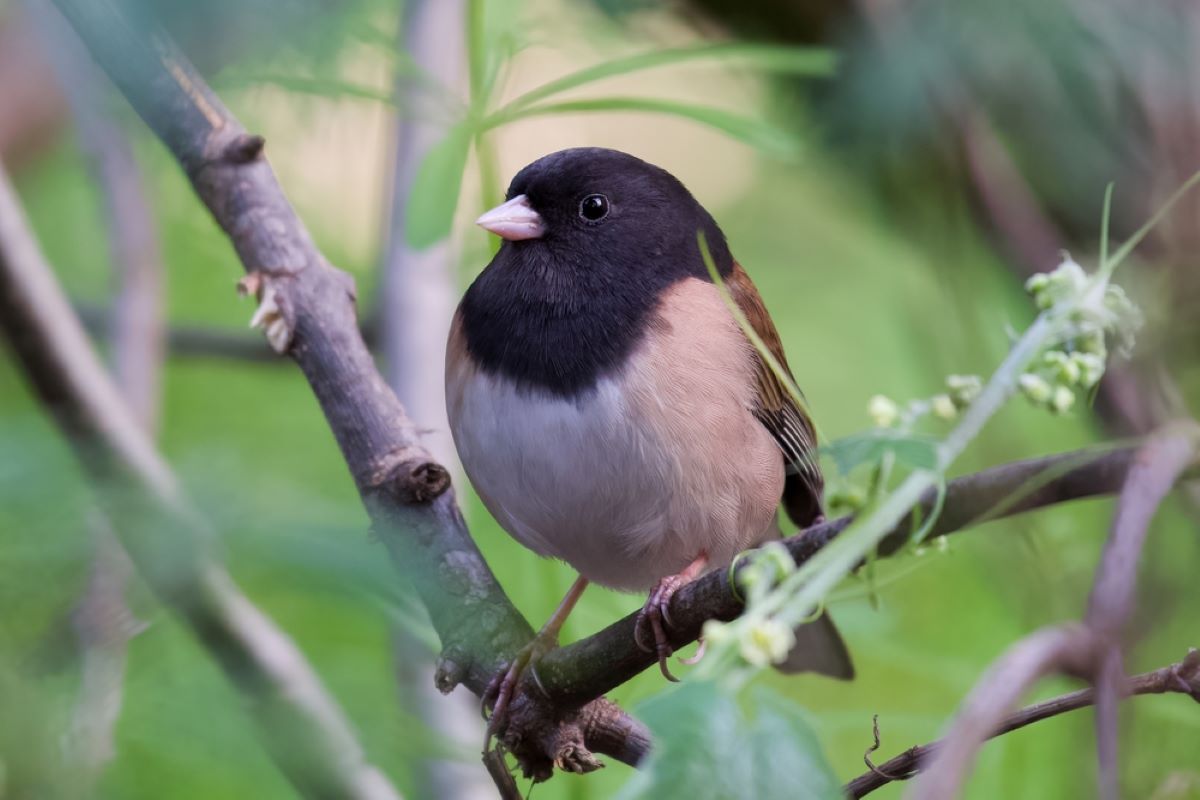Junco nests are found amid tall grass or brushy undergrowth that offers protection from the elements and predators, such as chipmunks. The female Junco weaves plant materials such as moss, twigs, and leaves into a tightly-woven cup and uses her body weight to create an impression to lay her eggs.
Dark-Eyed Juncos are one of North America’s most common forest-dwelling winter songbirds. They spend their breeding season high up north in Canada and migrate to most of the United States for their wintering grounds. While most Dark-Eyed Juncos have black eyes and stark black and white patterns, their coloring changes from region to region.
A Dark-Eyed Junco from Oregon looks very different from a pink-sided Junco in the Rocky Mountains! Let’s dive into ways to identify a Junco, its nesting habits, breeding season, mating habits, and eggs!
Dark-Eyed Junco Songbird Identification
Across most of North America, the gray-headed Dark-eyed Junco (Junco hyemalis) is noted for their white underparts, pink bills, and white outer tail feathers. They are of similar size and coloring to that of a Tuft Titmouse, only darker.
Female and male Dark-Eyed Juncos have almost identical color patterns. Although the shade of the male is richer, while the female coloring is more muted. What’s interesting about Dark-Eyed Juncos is that their coloring varies as you travel throughout the United States.
In Oregon, Junco have more brown color on their wings and undersides, similar to a House Sparrow. In the Rocky Mountains and Yellowstone Park, Dark-Eyed Juncos have a slightly pink coloring on their bottoms. No matter where you spot a Dark-Eyed Junco, their jet-black eyes and grayish-black head are clear giveaways.
Habitat and Diet
The Dark-Eyed Junco is a forest-dwelling bird and rarely appears in residential areas. These North American songbirds prefer the dense protection of established deciduous and coniferous forests scattered throughout Canada and the United States. These snowbirds aren’t afraid of a little cold weather.
While many migrate from Canada to most parts of the United States for their wintering grounds, Dark-Eyed Juncos that breed in New England often stick around for the cold winters. If birdwatchers want a glimpse of this stunning snowbird, heading deep into the forest is a great way to catch a glimpse.
In the summer, Juncos dine on a protein-rich diet of bugs, such as caterpillars, grasshoppers, spiders, mealworms, and tree bugs. Once the temperatures plunge, they switch over to plant-based options such as seeds that are more available in the cold winter months.

Mating, Nesting, and Eggs
Male Juncos sing to attract a mate, but they also bring their potential nesting materials to woo female Juncos. If a female selects a male as a mate, she alone builds her nest. Nesting sites of Juncos are found on ground level with plenty of protection from vegetation.
During the breeding season, Juncos raise between one and three broods. On average, the female Junco lays four eggs per clutch and incubates the nest alone. Junco eggs are typically gray or pale blue and have a very subtle glossy finish.
While male Juncos don’t have an active hand in incubation, they take on a more active role in feeding baby birds once the eggs hatch. The male Junco helps feed nestlings and even fledglings once they leave the bird’s nest.

Geography and Range of Migration
Migrating Dark-Eyed Juncos arrive in their breeding ground in Canada in mid-March and leave for their wintering grounds in September. While many Dark-Eyed Juncos head for slightly warmer climates in the non-breeding season, many stick around in their breeding grounds in some parts of the country year-round.
These North American Songbirds are found on almost every inch of North America during the breeding and non-breeding season. Many breed in Canada and Alaska and migrate as far south as Mexico or Central America. Many Dark-Eyed Juncos that live in the Northern portions of the United States don’t migrate at all and are year-round residents.
Vocal Repertoire: Songs, Calls, and Sounds
The call of the Dark-Eyed Junco is loud and proud. Their mating calls consist of trills and warbles that echos through thick conifer forests and last a few seconds. This mating call sounds very similar to that of a Sparrow. While the song of the Chipping Sparrow sounds almost metallic, the trill of the Dark-Eyed Junco is more musical. Mated pairs also sing to each other, although their songs are much quieter and harder to hear.
In addition to mating called, the Dark-Eyed Junco also has a few key contact calls worth noting. They use an abbreviated chipping note as they forage for food or to contact other Juncos in the area. When agitated, they emit high-pitched ‘kew’ notes when they spot predators or when another Junco invades their territory.

Will Dark-Eyed Juncos eat at Birdfeeders?
It’s rare to see a Dark-Eyed Junco nibbling at your birdfeeders, even in the winter. Junco’s prefer the dense protection of mature forests and are rarely spotted in residential areas. However, if you do live in an older neighborhood with very old trees or are nestled in the middle of the woods, Junco’s may appear in your area.
If you live in an area that attracts Juncos, they may sometimes pop up at your birdfeeders, so it’s essential to know why they like to eat best! Unlike other songbirds, Junco’s prefer seeds such as millet over sunflower seeds. Opt for a tube feeder small enough for Finches but won’t attract larger birds like Jays.

